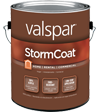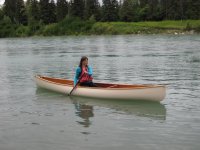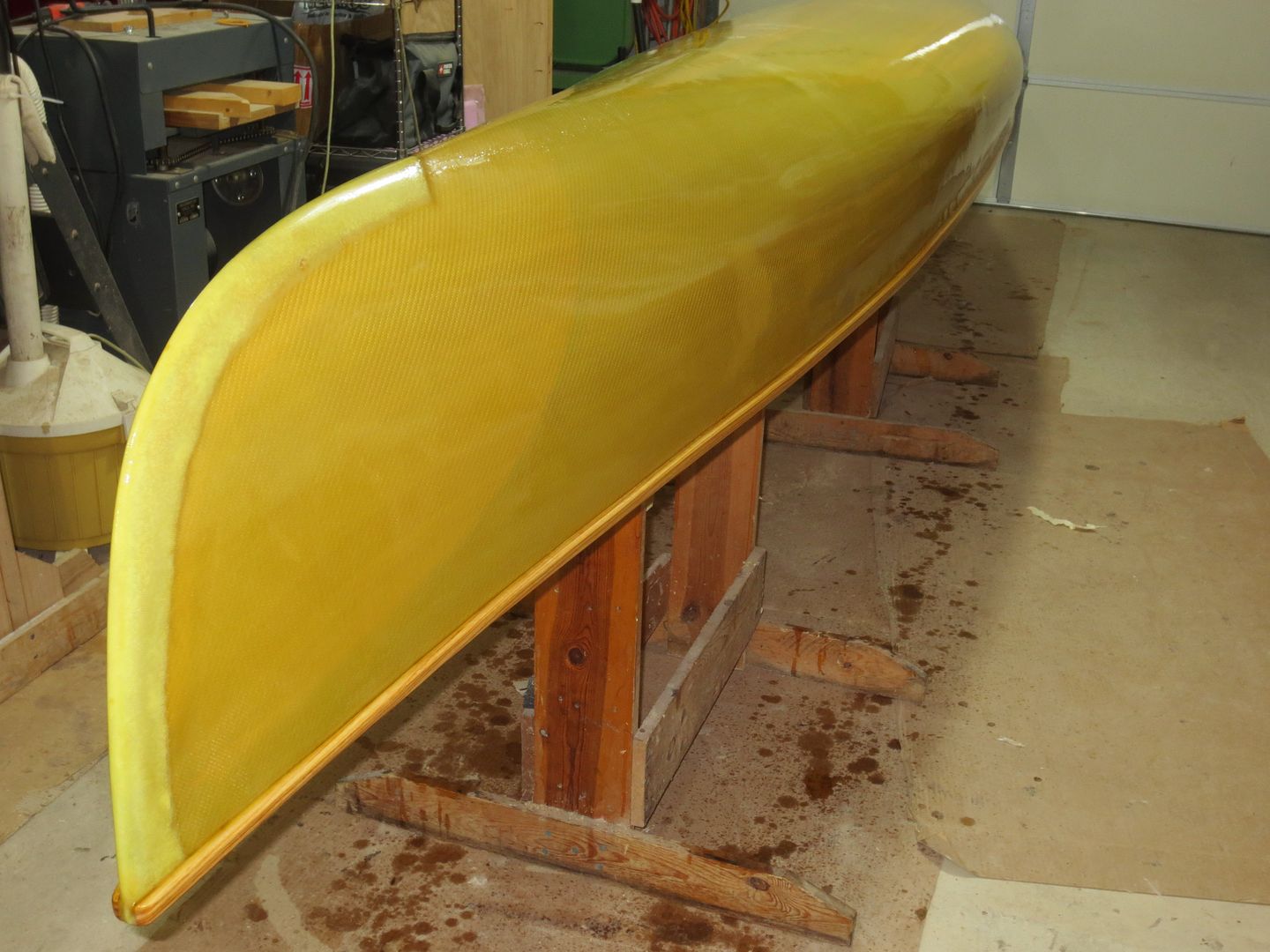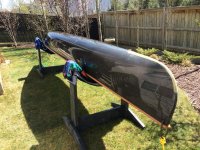I am currently testing the Polyester fleece on my second Kevlar.
I agree with the others that Kevlar felt and likely Dynel would be better choices. The Poly was introduced to me by Al the original owner of North West Canoe.
Polyester is at the least easier to sand than Kevlar, and provides a thick layer for abrasion resistance.
Jim, good to know that polyester fleece is an alternative; I have yet to see a Dynel sweatshirt at Walmart. Dynel and peel ply get into the ordeal of ordering materials, which can seem both confusing and pricey, especially for someone doing a one and only boat.
I’ve come to believe that Kevlar felt is an awful choice for a skid plate material, even properly installed the resin saturated felt stands too proud and gurgely. I suspect the reason it is included in many skid plate kits is that it is easy to install and the cut edges of the material are not all frayed by the time the user lays them in place.
I will allow that kevlar felt skid plates, if properly installed, are functional and durable. But
properly installed is considerably different than both the included instructions and what DIYer’s often do. I have a few used canoes with previous owner installed skid plates and have worked on dozens of others.
The most common mistakes I’ve seen:
Some kit instructions include the likes of “Start the skid plate 6 inches from the tip of the stem”. That’s not a skid plate, that’s a run the bow headlong into a vertical cliff face protection.
Because those kits are $70-$100 there is a DIYer urge to use every drop of resin which comes with the kit. Yeah,
the resin must be the expensive part, because there isn’t $5 worth of kev felt there. There is no better way to produce a resin rich and overly heavy skid plate while achieving no functional advantage.
The felt included in most kits is usually way longer than needed, and on some stems far wider. If the excess felt if cut down to size that just leaves even more excess resin to slather on. Back in the unfortunate day when I installed those kev felt kits for friends we found we could do two canoes worth of cut to size skid plates with the resin from a single kit.
Most skid plate kits are now simply epoxy resin. Old Town sold the last toxic stinky urethane resin kits I had seen, and even so, $5 of resin, $5 of kevlar felt, a pair of disposable gloves, a popsicle stick and piece of sandpaper = $100 kit? Thanks, but no thanks.
If not covered/compressed with plastic or peel ply resin saturated kevlar felt has the texture of a wood rasp, and since it’s kevlar it sucks to sand. Add to that some badly done DIY choices of cover/compression materials that produced rifts, valleys and crinkles in the epoxied felt. I had an otherwise lovely OT Appalachian in the shop on which the razor sharp crinkles would have sliced and diced anyone attempting to assist in a boat rescue.
Even the best installed kev felt skid plate are kinda fugly, even on blunt stemmed RX canoes, and hideous on the finer stems of a composite boat.
I so dearly wish my Penobscot and Explorer didn’t have kev felt skids plates. In part for the weigh savings, but mostly because I’d rather not have this awful thing stuck on the stem.
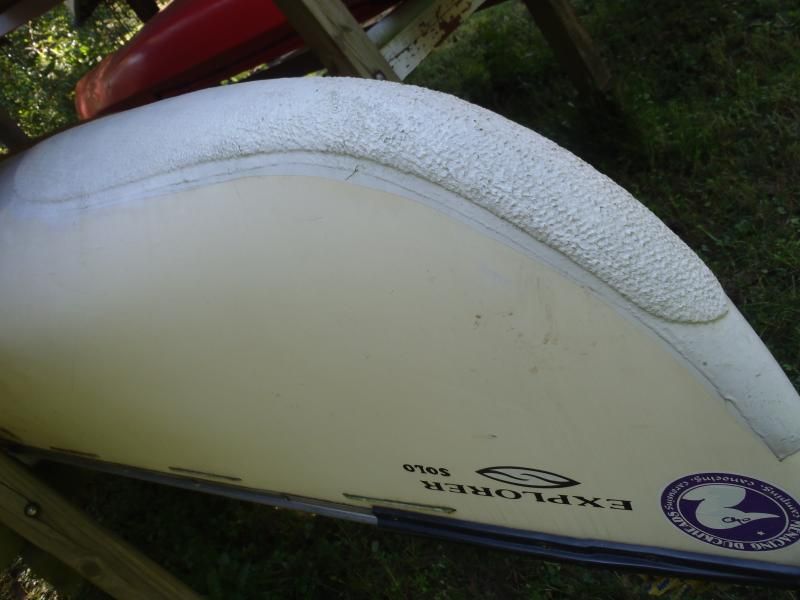
The kev skid plate in that awful install has been covered in another thick layer of epoxy in an attempt to smooth the stucco felt finish (more weight) and painted white. Still fugly
If no one ever installed another kevlar felt skid plate kit the canoeing world would be a better place. Rant over, before I tell you what I really think of kevlar felt as a skid plate material.
A single layer of Dynel seems to provide excellent abrasion resistance, and when covered with peel ply pressed onto the material as the epoxy is setting up the Dynel layer nearly disappears, leaving no tall gurgle transition.
Here’s the most recent canoe skid plate; Dynel, graphite powder, black pigment, topcoat of black paint.
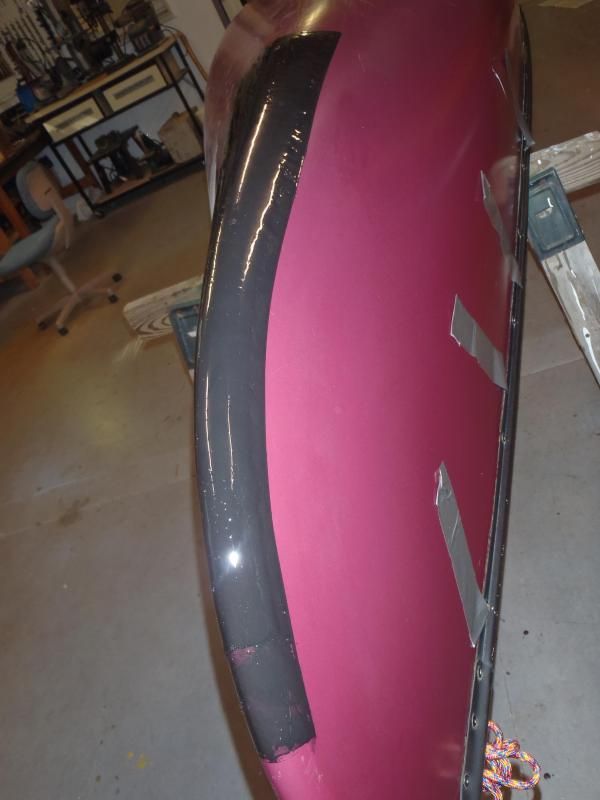
And the most recent decked hull skid plate.
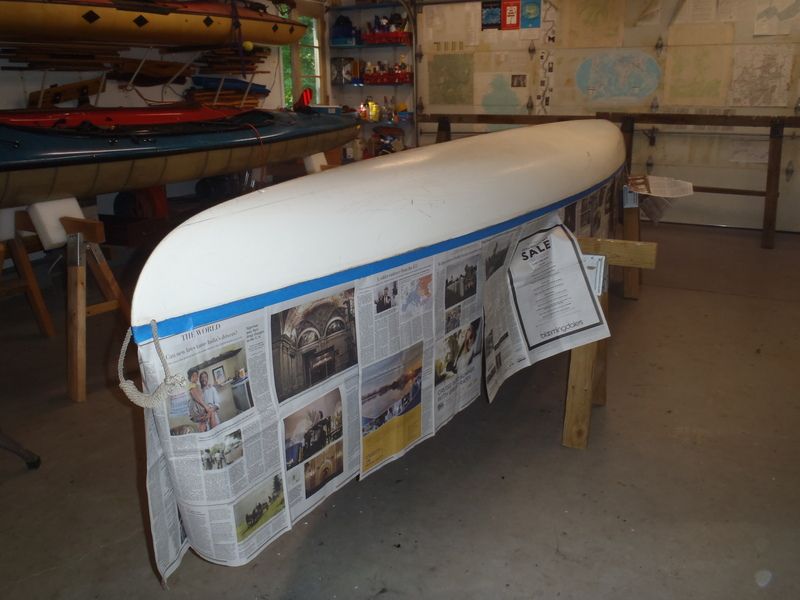
Yes, there is a large Dynel skid plate on there, dang near seamless with the hull. I’m getting better at it, and I think one trick is to use release treated peel ply (not the green pull nylon stuff Sweets sells) and continue to press it into the resin swollen Dynel until the epoxy had dang near hardened.
On the above canoe I was still experimenting with different skid plate materials. I once regrettably used the awful kevlar felt, and still have a yard or more of that nearly useless stuff in the shop. I’ve used 4oz and 6oz glass, in single and double layers. Urethane resin, which the better skid plate kits once came with, West Epoxy resin, G/flex. Graphite powder. Color agent pigments.
Hell, as an experiment I’ve used no cloth and just a thick coat of excess urethane resin (which has held up remarkably well).
On that canoe skid plate install the wear along the bow stem was better covered by something linear long and narrow, and instead of cutting a lengthy strip of Dynel I experimented with 2” bias weave glass tape. The thickest fiberglass tape I have ever seen, some (German made?) stuff from Sweets, it was easily the equivalent of two or three layers of 6oz glass and with the bias weave it laid down fairly wrinkle free.

Installed with a mix of West System 105/206 and G/flex, graphite powder and black pigment, that thick bias tape did the trick.
Skipper, you seem smitten with the canoe tinkering bug, which can be a most pleasing addiction. For sundry outfitting ideas, this was the last canoe I found to work on. I pretty much threw everything in the shop at that hull.
http://www.canoetripping.net/forums/...itting-project
If you end up considering the Dynel route Express Composites or Sweets may sell half yards of the Dynel and peel ply, which would still be way more material than needed for two skid plates. And if you wind up taken by the canoe tinkering bug any excess cloth or resin will come to good use.

